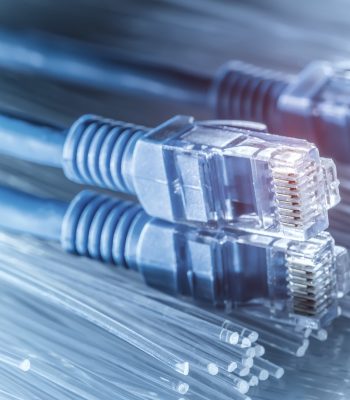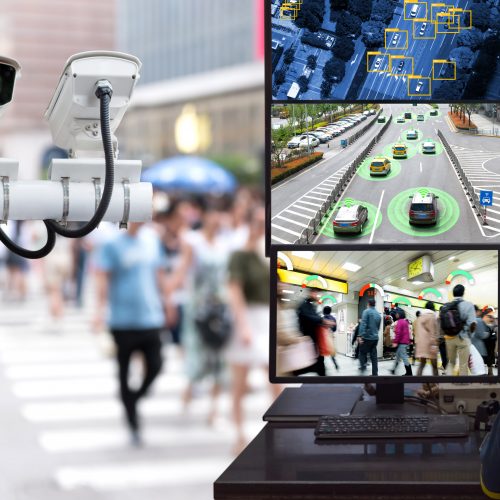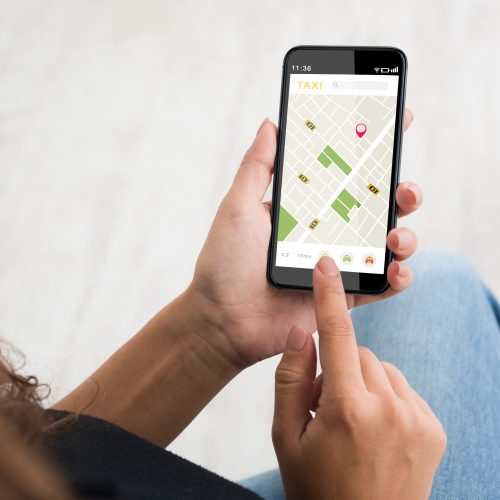Description
While traditional methods for collecting data, such as household and firm surveys, have often required active effort on the part of the government, there is an increasing variety of technology which allows for more passive data collection. Examples include satellite imagery, vehicular GPS, cell phone data, sensors and video cameras, among many others. Smart cities integrate these collection methods within their policy arsenal, and can use them to collect and communicate data at a faster speed, scale and accuracy than ever before.
Two of the principal sources of data collection in smart cities are (i) sensor-based technologies deployed across city infrastructure and (ii) user-generated data, such as that provided by citizens when they use smart devices and web services.[i],[ii]These forms of data enable real-time monitoring and an up-to-date snapshot of city conditions.
- Sensors. Sensors are physical devices that detect and respond to specific inputs from the physical environment, such as noise, light, heat, pressure, motion or any of the enormous number of other environmental phenomena. The output is usually a signal converted into human-readable form at the sensor point, or transmitted over a network for further processing. The types of sensor are diverse, ranging from sound sensors, such as microphones, environmental sensors, such as rain gauges, and automotive sensors, such as speedometers. Choosing the most appropriate sensor therefore depends first and foremost on the policy question in mind and, in turn, the requirements this demands with respect to accuracy, range, stability, frequency, cost and scalability.
- User-generated data. Recognising that citizens can be a form of ‘sensor’, smart cities use various types of citizen-generated data, such as information posted on social media, as a source of data for different aspects of service delivery. For instance, when a city faces an unexpected critical event, such as a disaster, information posted on social media may help foster life-saving interventions. Similarly, crowdsourcing apps can be used to encourage citizens to provide information or services to other citizens. In Rio de Janeiro, Brazil, for example, citizens can submit their traffic status to the transport authority via Waze to help the city identify congestion hotspots and optimise the road-user experience for everyone. One consideration when using citizen-generated data is that the veracity and representativeness of the information must always be evaluated based on the users in question (for example, due to selection bias or “fake news”).
Several devices, such as mobile phones, can be regarded as a widespread class of sensor, providing an endless array of useful data for policy – such as traffic management, event management and crowd sourcing, among others. However, collecting such types of data often requires collaboration with mobile operators and consent from terminal owners. Cities must take into account the additional burden and resource efforts required to ensure agreement to the use of such data.
While these smart technologies offer a range of useful policy applications, one should also be aware that traditional survey data have a critical complementary role to play in fostering their potential. Taking Taipei as an example, its sensor-based vehicle surveillance system would be incomplete were it not for its well-established household registration system. Using these technologies, if a driver violates traffic regulations or a car is stolen, a system of cameras and sensors can easily detect the violation. However, it can only enforce and take action to the extent that the household registration system effectively identifies to which individual or company a certain vehicle and licence plate belong to.[iii] Taipei demonstrates how a complete household survey system is a necessary foundation for a smart city. Cities should therefore not only focus on the most advanced or impressive ICT technologies when pursuing a smart city strategy, but should also ensure that the foundations of data governance and digital infrastructure are in place to make the most of any smart investments.
Once data have been collected, they then need to be transmitted, stored and processed before being further disseminated. Connectivity between smart devices and processors hence plays a vital role in processing and exchanging data. This is typically achieved by wired or wireless networks. There are a number of key issues to consider when deciding on wired and wireless connections. The one-time cost of wired networks, for example, is more expensive and the transmission range depends on the physical length of the wire. Yet wired networks are stable and often able to transmit larger-scale data. As for wireless networks, there are various connectivity options, ranging from low-power wide-area networks (LPWAN) to cellular technology such as 3G, 4G and 5G that provide a reliable option, with high bandwidth for communication over long distances. Wireless connections are typically more suitable when the sensor device moves (for example, on a bus). If the device is stationary (on a street light, for instance), both wired and wireless methods can be adopted.

Resource implications and key requirements
Financial
The development of data collection and transmission systems often relies heavily on government budget and local infrastructure. Governments can complete the installation of sensors and connectivity devices themselves or they can procure or rent services from third parties. City governments can purchase sensors and SIM cards, or even build their own fibre optic network, through public procurement if the budget is sufficient.
The cost of a wired network depends on its owner and maintainer. Some city governments choose to deploy their own fibre network as the backbone of a smart city, where one-time deployment cost is high but the annual maintenance costs can be relatively low. Many cities may choose to lease the services of their telecom partners and the cost will be a bandwidth-dependent leased service fee.
Sensor status maintenance and security
Regardless of whether the data are collected from sensors, mobile terminals or web services, city governments always need to verify and confirm the quality of information coming in. This includes setting up processes for:
- data source monitoring (checking whether a sensor is on or off, for instance)
- real-time data checks (verifying the reasonable value of data and implementing warning signs for abnormal data)
- establishing notification systems for the data user and the back-end manager should an incident occur.
Current sensors are designed to be lightweight, with the trade-off that they cannot carry a complex security mechanism. Hence, security protection is focused on the transmission of information by encryption or account and password management.

Potential private-sector participation
To develop and implement a successful data collection and transmission process, local authorities will likely have to work with several stakeholders, including technology solutions providers, telecoms companies, and construction contractors. The most basic form would be for governments to initiate public procurement contracts for the installation of relevant devices and transmission infrastructure, which can be on a purchase or lease basis depending on the government’s needs and resources. Other forms of private sector involvement might include operations and maintenance contracts, whereby private companies either manage the infrastructure in exchange for an ongoing fee, or they win tenders for installation on the basis that they will manage the assets for a certain timeframe.
More advanced models of private sector participation would involve the private sector both financing and operating the data assets (including via concession and PPP arrangements), whereby the private sector recoups its investments either through user fees or from selling its services to government and society. One interesting example of this involves an Israeli-UK company called Valerann. Valerann has a patented, state-of-the-art Internet of Things (IoT) traffic sensor, which can be embedded in roads as “traffic studs”, and used to collect data on exact vehicle driving patterns down to an accuracy of 10 centimetres.[iv] Interestingly, despite the higher cost of the technology, Valerann’s business model involves giving its sensors to governments for free but recouping its investment from servicing clients with advanced traffic management solutions coming out of their data.
Such models of private participation are important avenues for governments to expand and evolve their digital infrastructure, and can potentially be done at much lower cost than traditional procurement approaches. That said, city governments should also be aware of the possibility of handing over sensitive public data or losing control of vital public services. For example, in the case of one EBRD city which recently sought to introduce e-ticketing across its bus system, a joint venture was initiated in which a local telecoms company implemented GPS technologies across the fleet, and subsequently developed a popular SMS-based system for informing citizens on the latest bus routes. However, as years passed, the company refused to share its data more widely, preventing the government from upgrading the system to a more up-to-date technology such as real-time tracking via websites and mobile apps as seen across many other cities globally.

Obstacles to implementation and potential solutions
In many cases, cities may lack the funds and human resources to widely deploy the most advanced technologies for data collection. Rental services would be a good option in such instances, whereby the solution providers are responsible for installation and maintenance. One important issue here is that renting sensors or connectivity services only gives the government the right to the data collected, while the private sector owns the sensors and associated devices. In such instances, city governments could encounter difficulties, for instance, where the private sector stops providing the services unexpectedly (for example, if they decide not to extend the contract) or the quality of service falls short. Hence, a city government should consider such scenarios when signing a contract with private providers.
It is also important to recognise that certain factors, such as cost, size or battery efficiency, may limit sensor application in policy settings. Yet as technology continues to develop apace, the possibility of smaller and more efficient sensors makes these trade-offs more amenable to policy application. At present, however, governments often have to make trade-offs between the most advanced and expensive sensors versus cheaper but larger alternatives. Hence, sensors deployed in different locations often need different solutions to connect them to a network or to a power source. These challenges can make data collection a complex process.
Citizens’ privacy concerns may be another issue when it comes to data collection. Regulations and standards play an important role here to define what kind of information can be collected and shared, and such rules should be clearly identified at the project planning stage. For example, in Birmingham in the United Kingdom, CCTV cameras are sufficiently zoomed out so that data on specific individuals are not collected, only data relevant to policy responses such as traffic management.
Lastly, it is not always necessary to adopt the most advanced technology. For instance, the most appropriate transmission method is the most stable, current commercial operation method that local telecom companies can offer. If the digital infrastructure is not mature, it is more appropriate to start with a wireless method, as constructing a wired network takes a long time and carries a greater one-time deployment cost.

References
[i] Gharaibeh, A. et al (2017) “Smart Cities: A Survey on Data Management, Security and Enabling Technologies”. Available at: https://www.researchgate.net/publication/318975578
[ii] Sinaeepourfard, A. et al (2016) “Estimating Smart City Sensors Data Generation Current and Future Data in the City of Barcelona”. Available at: https://www.researchgate.net/publication/304580274
[iii] Chen,Rong-Ming (4th September 2020) Interview by Y. F. Lin. “Interview with the Deputy Commissioner, Department of Transportation, Taipei City Government.”















